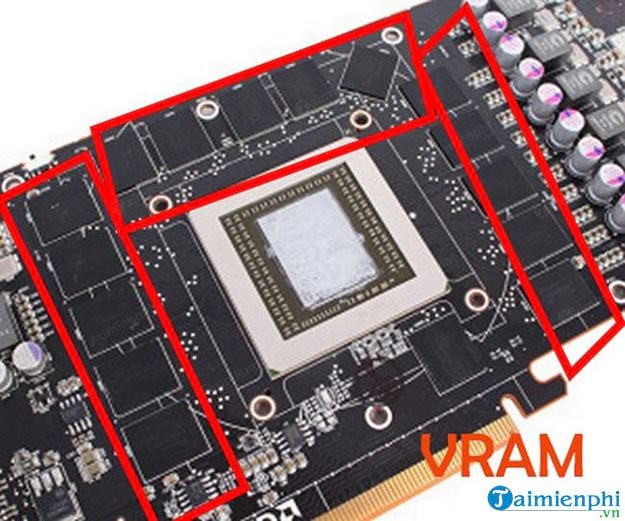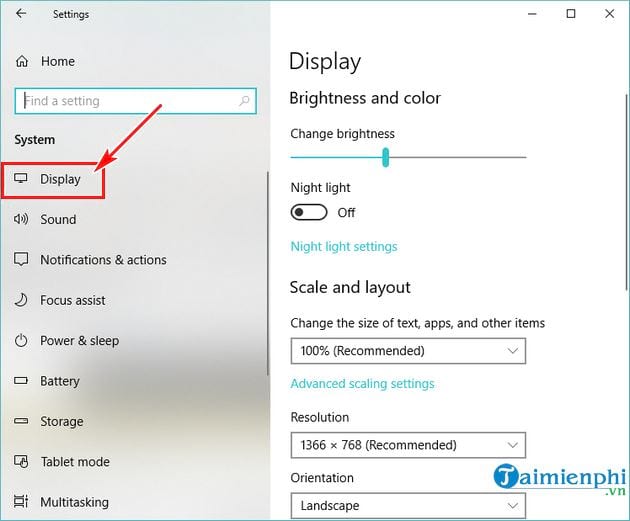How to check VRAM on Windows 10
VRAM plays an important role in applications that display complex image textures or display polygonal 3D structures, commonly found in video game applications or 3D graphic design applications. For applications that rely on more complex data processing functions, the amount of VRAM on the graphics card will not be as important as the amount of RAM on the system. And to be more clear, users only need to check VRAM on Windows to know this difference.
What is VRAM?
VRAM or Video RAM is a special type of RAM that works with a computer's graphics processor or GPU. GPU is the chip located on the graphics card (or video card) of the computer whose task is to display images on the computer screen.

Nowadays, the terms GPU and graphics card are often used interchangeably. It can be called GPU but can also be called graphics card, see how to check your computer's graphics card using GPU Z here.
VRAM memory stores the information needed by the GPU. When using games, there are lighting effects, which will allow the GPU to quickly access the information, and the output video will reach the display screen. In specific cases, using VRAM will help a job or an application with a specific function run faster than when you use RAM, because VRAM is located next to the GPU in the graphics card, and it is designed with The purpose is to operate at high intensity.
How to check VRAM on Windows 10 computer
To check VRAM in Windows 10, follow these steps:
Step 1: Open Settings by pressing the keyboard shortcut: Windows + I. The Windows Settings interfaceappears as shown below:

Step 2: Click on System -> then click on Display on the left bar.

Step 3: Scroll down to find and then click on Advanced display settings .

Next, click on Display adapter properties as described in the image below.

Step 4: The control interface will appear -> select the Adapter tab and then look in the Information Adapter section to check the information.

In the image above, you will see the VRAM capacity right next to Dedicated Video Memory . As for the Adapter Type section , you will see the name can be NVIDIA or AMD graphics card, this will depend on the type of device you are using.
If you see the information on Adapter Type as AMD Accelerated Processing Unit or Intel HD Graphics (like the image above), then the system you are using has integrated graphics.
So you know what VRAM is and how to check VRAM on Windows 10 ! Similar to checking RAM on a computer, basically the way to view VRAM information on a computer is quite simple, and you can also use additional specialized software to check the computer configuration. , you will see hardware information and of course VRAM information that you are interested in, see the top software to check computer configuration here and choose a suitable application to use such as CPU Z. term. Good luck!
You should read it
- What is VRAM? How to increase VRAM for computers
- What is VRAM? Comparison between VRAM and RAM
- Warning: Detected malicious code hidden in the graphics card's VRAM
- 4 best ways to check RAM capacity on Windows 11
- How to check and monitor RAM status on Windows 10
- Steps to use Windows PC Health Check, check whether the computer can install Windows 11 or not
- How to check if Windows 10 is Active or not
- 4 simple ways to check the configuration and hardware information of computers and laptops
May be interested
- Steps to use Windows PC Health Check, check whether the computer can install Windows 11 or not
 microsoft has a tool to help users check if the computer is eligible to install windows 11 or not.
microsoft has a tool to help users check if the computer is eligible to install windows 11 or not. - How to check if Windows 10 is Active or not
 currently, there are not many ways to check if windows 10 is active with simple tricks. for example, how to check if windows 10 is activated through the computer system, through windows settings or through cmd. if not yet activated, please reinstall windows license to protect and help your computer run efficiently and stably.
currently, there are not many ways to check if windows 10 is active with simple tricks. for example, how to check if windows 10 is activated through the computer system, through windows settings or through cmd. if not yet activated, please reinstall windows license to protect and help your computer run efficiently and stably. - 4 simple ways to check the configuration and hardware information of computers and laptops
 to check the computer configuration information on windows xp, vista, 7, 8 / 8.1 and windows 10 you can use the dxdiag command on cmd, look at the pc's properties or use support software. in the article below, tipsmake.com will guide you how to check, see the hardware configuration on the computer quickly, simply but still ensure to provide enough computer information needed.
to check the computer configuration information on windows xp, vista, 7, 8 / 8.1 and windows 10 you can use the dxdiag command on cmd, look at the pc's properties or use support software. in the article below, tipsmake.com will guide you how to check, see the hardware configuration on the computer quickly, simply but still ensure to provide enough computer information needed. - How to check the drive in Windows 10
 microsoft hard drive repair and scanning tool, check disk (chkdsk) has been around for over 30 years and is still useful today. users running microsoft's latest operating system can still use this tool to check the drive. this article will guide you to check the drive on windows 10.
microsoft hard drive repair and scanning tool, check disk (chkdsk) has been around for over 30 years and is still useful today. users running microsoft's latest operating system can still use this tool to check the drive. this article will guide you to check the drive on windows 10. - How to check if Windows 11 has been activated and activated?
 if you are not sure if the version of windows 11 you are using is activated, just follow a few simple steps below to check.
if you are not sure if the version of windows 11 you are using is activated, just follow a few simple steps below to check. - How to turn off spell check mode in Windows 10?
 windows 10 as well as the microsoft office suite, now has the function to automatically correct spelling, grammar ... when users type in the system. but for many people, this is a feature that causes trouble, unnecessary. so what to do to remove this automatic spell check feature?
windows 10 as well as the microsoft office suite, now has the function to automatically correct spelling, grammar ... when users type in the system. but for many people, this is a feature that causes trouble, unnecessary. so what to do to remove this automatic spell check feature? - Steps to check computer configuration on Windows 11
 checking the configuration of your windows 11 computer will help you know the specific parameters and see if they are suitable for the software and games you want to use.
checking the configuration of your windows 11 computer will help you know the specific parameters and see if they are suitable for the software and games you want to use. - How to check IP address on Windows 11
 sometimes you need to know your windows 11 ip address but it's not clear how to see it, how to do it, where to start? there are many ways to check the ip address on windows 11, you can check through the settings, at the command prompt or using powershell.
sometimes you need to know your windows 11 ip address but it's not clear how to see it, how to do it, where to start? there are many ways to check the ip address on windows 11, you can check through the settings, at the command prompt or using powershell. - How to check the copyright of Windows 11
 do you know how to check the copyright of windows 11 on your computer? the guide below will help you quickly know if your computer has been copyrighted or not.
do you know how to check the copyright of windows 11 on your computer? the guide below will help you quickly know if your computer has been copyrighted or not. - Instructions for adding 'Check for Updates' option to Windows Context Menu
 windows 10 is gradually switching from control panel to new settings application. in this application, you can easily check for new updates by navigating to update and security -> windows update, then clicking check for updates. however, you can do this faster by switching the check for updates option to the context menu on the desktop.
windows 10 is gradually switching from control panel to new settings application. in this application, you can easily check for new updates by navigating to update and security -> windows update, then clicking check for updates. however, you can do this faster by switching the check for updates option to the context menu on the desktop.










 How to download Windows 10X and install it right on Windows 10
How to download Windows 10X and install it right on Windows 10 How to divide a hard drive on Windows 10 is extremely easy, anyone can do it
How to divide a hard drive on Windows 10 is extremely easy, anyone can do it How to turn on/off firewall on Windows computer
How to turn on/off firewall on Windows computer How to monitor Internet data usage on Windows
How to monitor Internet data usage on Windows Is it possible to dual boot Windows 10 and SteamOS on PC?
Is it possible to dual boot Windows 10 and SteamOS on PC? How to turn off test mode on windows 10
How to turn off test mode on windows 10